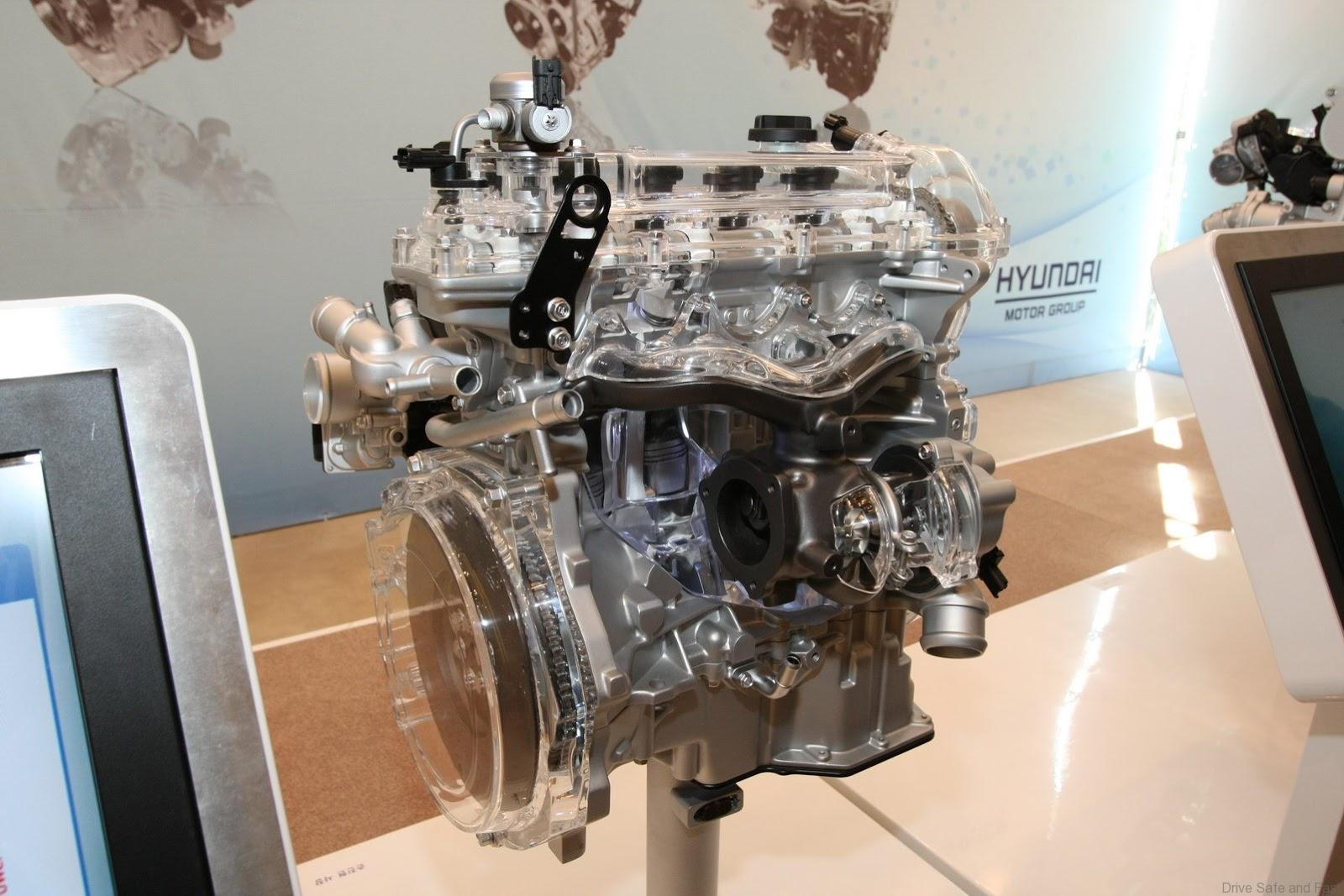Hyundai Motor is pushing ahead on two fronts in powertrain technology. At the company’s annual International Powertrain Conference, Hyundai Motor has announced a new 1.6-liter GDI engine addition to the highly successful and versatile Kappa engine family, and an advanced front-wheel drive 8-speed automatic transmission.
The new Kappa 1.6-liter GDI engine is designed to boost power, performance and fuel economy, while driving down production costs and CO2 emissions in the growing mid-class hybrid electric vehicle (HEV) and plug-in hybrid electric vehicle (PHEV) segments. Arriving in markets early 2016, the new unit marks the company’s first combination of the Atkinson cycle, cooled exhaust gas recirculation (EGR) and a long stroke specification to maximize thermal efficiency. The Atkinson cycle itself reduces the pumping loss through its late intake valve closing time, while enhancing fuel savings by increasing the expansion ratio relatively. In the process, an intake oil control valve (OCV) integrated with the continuous variable valve timing (CVVT) operates to simplify oil flow. Also, the CVVT phasing angle is extended for faster CVVT response.
The EGR system applied to the engine helps to recirculate exhaust gases back into the cylinder and burns them again. The new Kappa HEV engine alone delivers a 3% gain in fuel economy through three stages: gas extracted upstream ensures more than 20% EGR rate, the EGR cooler delivers a cooling efficiency of 98% and the single stage gear EGR valve results in a 56.9 millisecond response time. A specially designed straight intake port increases the tumble flow of the EGR gas to allow fast combustion to further aid economy and boost power output.
Moreover, fuel savings are further boosted by splitting the thermostat cooling temperatures of the cylinder block (105℃) and head (88℃), which then reduces friction and knock by allowing a higher temperature coolant in the block. The cylinder block heats up quickly for lower friction and a more efficient run, while the cylinder head operates at moderately low temperatures to suppress knock tendency, hence improving fuel economy. The new engine also features a six-hole laser-drilled GDI injector, high pressure fuel supply system of maximum 200 bar, securing clean combustion, improving fuel economy and reducing emissions to fulfill all global emissions standards.
The integration of technologies achieves a new engine thermal efficiency from 30% (of any typical engine) to 40% and secures competitive performance. The new unit produces 105 PS (77.2 kW), 15.0 kgf.m (147 Nm) and will be fit for future hybrid models. The new front-wheel drive 8-speed automatic transmission has improved fuel economy by an impressive 7.3% when compared with the existing 6-speed automatic transmission unit. Coupled with better driveability and smoothness of the wider gear span, Hyundai Motor will present a powerful new option with its Lambda, Theta turbo GDI, and R family engines, targeting the large and luxury car segments.
The new transmission is based on a unique layout, with an additional clutch to Hyundai Motor’s 6-speed automatic transmission. By increasing the gear span with a more number of gears, the transmission comes with an improved acceleration performance at the low gear range, and enhanced fuel economy and NVH at the high gear range. Even with all these improvements, the weight has also been reduced by 3.5 kg from the 6-speed automatic transmission. The unit’s gains in economy and performance come from several sources including a direct control valve body that allows solenoid control of the clutch directly rather than via several valves. By simplifying the structure of the valve body, the new transmission reduces oil leakage and improves the stability of gear shifting.
Other optimized parts include a re-engineered oil pump. This integral component may reduce the power of most auto transmissions, so the company improved efficiency of the 8-speed automatic transmission by optimizing the teeth and reducing the size of the pump gearing. The transmission’s damper control multi-disc torque converter is another key technology that enhances fuel economy and drivability. A separate system to control the 4-disc damper clutch, instead of a single disc, allows the enlargement of the lock-up range and faster response for damper control.
The new transmission also features a three-pronged approach to friction loss, ultimately boosting economy. The groove patterns are engineered to optimize the clutch for low drag, while a refined baffle plate minimizes the churning losses of transmission oil. Finally, demonstrating the attention to detail in engineering, the ball bearing contact areas have been reduced between rolling elements to help boost the powertrain’s efficiency.




